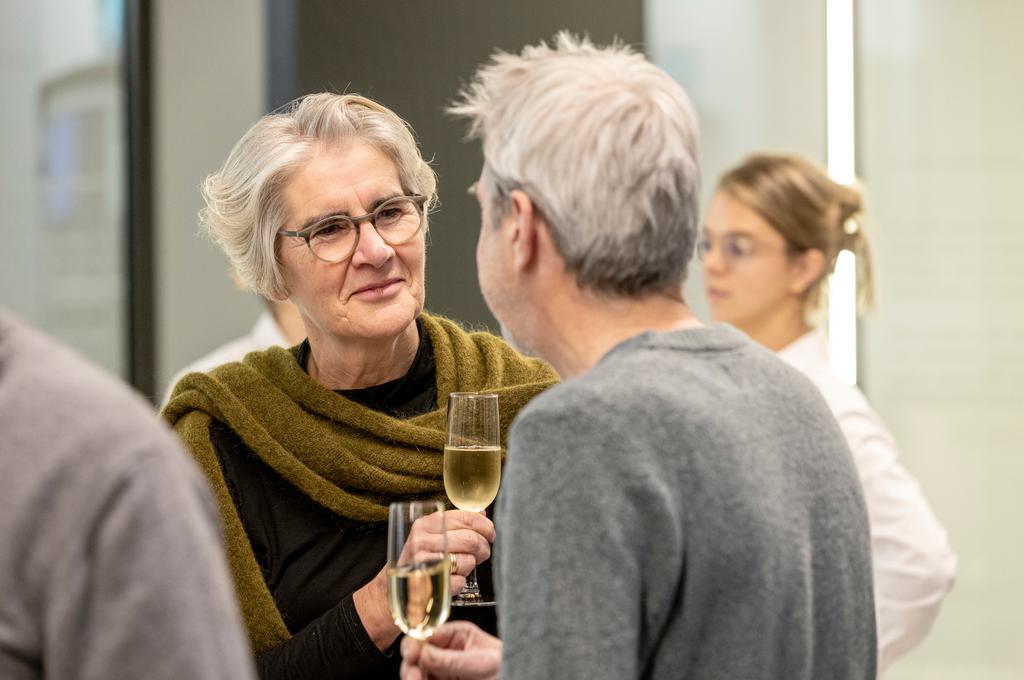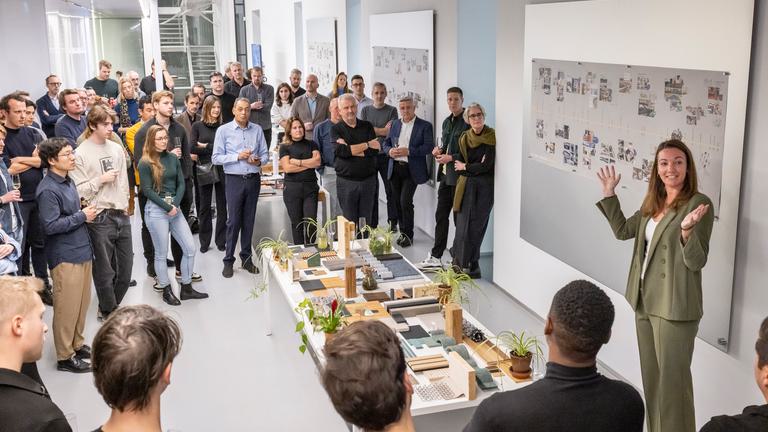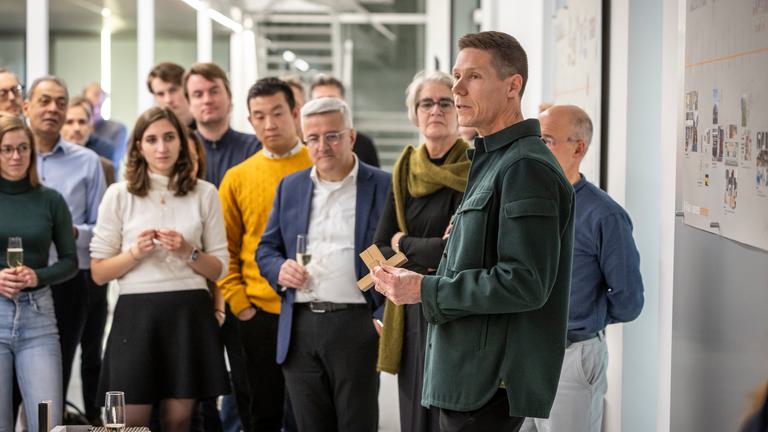Det van Oers has led cepezedinterieur since 2013. She set up the department together with Klaas Cammelbeeck. In the context of the 10th anniversary, Det reflects on this expertise within cepezed and on her profession in general.
You have now been an interior designer at an architecture firm for 10 years. How do you see the relationship between architecture and interior design?
I see this relationship as a symbiosis, in a building that is well designed, you don't notice where the architecture ends and the interior begins.
Is that what appealed to you to set up an interior department at cepezed in 2013?
Absolutely, I would never want to work purely on interiors, I didn't do that before I started at cepezed either. And cepezed's buildings lend themselves to interior additions because of their clear structure. It's nice to add an extra layer in a building where daylight access, sightlines, orientation and transparency are already in order. And there are no defining, posturing shapes or odd angles.
How would you describe the layer that cepezedinterieur adds and how do you ensure that the architecture does not lose its strength, or brightness?
It is a softening layer, using form, tactility, and colour accents, of material and planting. We aim for contrast in harmony. By contributing to the design from the start, we succeed in doing so: we think mostly from the inside out, the architects at cepezed from the outside in. We meet each other halfway. We don't just add an extra layer, it's an integrated design in fact.
You started the department together with Klaas Cammelbeeck. What did you like about cepezed at the time and how did things go in the beginning?
I liked the no-nonsense attitude, like at Kho Liang Ie where I worked at the beginning of my career. And I was always a fan of Items magazine, of which Jan Pesman was one of the founders. The first thing I did at cepezed was to create a materials library, to make the possible variation on black, white, grey, steel and glass - cepezed's signature at the time - tangible.
In the meantime, cepezedinterieur employed 6 to 7 people. What does the team look like?
Our team quickly grew to 5, 6 people. It's a diverse team, we have interior architects, architects and furniture makers.
In which design did you first feel that cepezedinterieur really made a difference?
The Van Spaendonck Ondernemingshuis in Tilburg was an enjoyable assignment to work on. I prefer transformations anyway, because of the soul that is already in the building. The Ondernemingshuis, a kind of multitenant business centre, was located in an old building by architects Van den Broek en Bakema, dating from 1968. cepezed designed the transformation of the architecture. The director and project manager gave us an additional budget for the interior. It was fun to shape the identities of the different tenants while maintaining unity with the design of the common areas, such as the meeting rooms and the work café.
This is not to say that an interior in new buildings is soulless, is it?
No, no, look at the ROC in Doetinchem, Graafschap College, for example. There we designed a distinct interior for the 2 users. With fluorescent colours for the Sport & Exercise course, and ‘camouflage’ for the Safety & Craftsmanship course. With the more current projects, it is pleasant that cepezed and cepezedinterieur act jointly from the start, such as with Fugro, the educational location op Zuid, in Rotterdam, and with the Kadans-projects. For Kadans, we designed a modular furniture line that is being rolled out at several locations.
- continue reading below -
we don't just add an extra layer, we create an integrated design



Has sustainability become more important in interior design over the past 10 years?
The necessity is now unquestionable, which was strangely enough not the case 10 years ago. In our profession, this manifests itself mainly in the use of bio-based and circular materials. For me, it is natural to work this way, but this intrinsic motivation has grown over the course of my career. I want to select materials taking this into account, fortunately more and more sustainable material is being developed. I have always had a soft spot for wool: it lasts a long time and is fire-retardant.tragend.
You also work on completely circular projects.
Yes, I am very happy with the assignment for Cultureel Centrum Oss. At Merkx and Girod, before cepezed, I worked for years on the renovation of the Concertgebouw in Amsterdam, among other things. It is very special to be able to do a theatre again. I have great affinity with that world. I see art and culture as an indispensable, contributing source. A play, exhibition or concert enriches society!
What collaborations do you find important, besides the one with cepezed?
It always inspires me enormously to collaborate with graphic designers, artists and textile and lighting designers. Such a collaboration has great added value. It makes you look at your own design from a different perspective and it deepens the design.
And the collaboration with the users, during the design process?
That is what is so great about our profession! Interior design concerns the people that will soon be actually using some place. What that place looks like is very important. Talking to these users inspires me immensely. It is our mission that users can function optimally, so we have to get to know and understand them. A list of requirements is not enough in this respect.
What is the biggest challenge for an interior designer?
Interior comes very close to the user. About a façade structure, users generally have a less strong opinion than about the interior. That's why a strong story is important. A good overall concept makes choices clear. With an analytical, concept-based approach, you get less subjective discussions about beautiful and ugly.
→ Read more about cepezedinterieur or Det van Oers
→ Mail bd@cepezed.nl or call our business development team on +31 (0)15 2150000